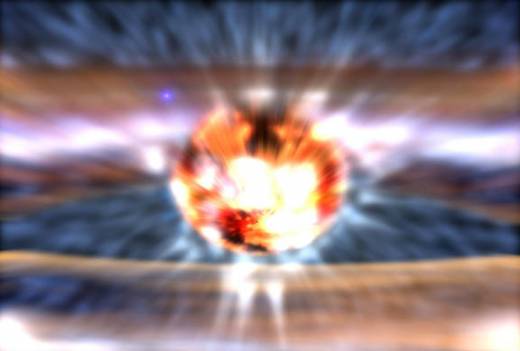The last outburst of a millisecond pulsar?
 The 599 Hz millisecond pulsar IGR J00291+5934 is a source I've been
studying for more than a decade, having been involved in the
discovery as well as observation of every transient outburst since.
Although the first few outbursts displayed a remarkable predictability,
the most recent, in 2015, was almost 3 years "late". In a detailed study of
the INTEGRAL
and Swift
observations of the outburst,
ISSI PhD student
Vittorio De Falco
examined the broad-band X-ray spectrum and the pulse properties, as well
as data covering the first thermonuclear burst ever detected from the source.
Remarkably, the estimated time-averaged accretion rate is decreasing on a
timescale of only a few years, suggesting that we are unlikely to see another
bright outburst in the next decade, if ever. Vittorio's paper was just
accepted by A&A.
The 599 Hz millisecond pulsar IGR J00291+5934 is a source I've been
studying for more than a decade, having been involved in the
discovery as well as observation of every transient outburst since.
Although the first few outbursts displayed a remarkable predictability,
the most recent, in 2015, was almost 3 years "late". In a detailed study of
the INTEGRAL
and Swift
observations of the outburst,
ISSI PhD student
Vittorio De Falco
examined the broad-band X-ray spectrum and the pulse properties, as well
as data covering the first thermonuclear burst ever detected from the source.
Remarkably, the estimated time-averaged accretion rate is decreasing on a
timescale of only a few years, suggesting that we are unlikely to see another
bright outburst in the next decade, if ever. Vittorio's paper was just
accepted by A&A.
Read the paper arXiv:1611.08218


 Some thermonuclear burst sources exhibit temporary "burst oscillations",
periodic variations in the X-ray intensity at frequencies characteristic
of each source. It has been shown that these oscillaions trace the neutron
star spin, but much is still not known about the detailed mechanism, and
many puzzles remain.
Some thermonuclear burst sources exhibit temporary "burst oscillations",
periodic variations in the X-ray intensity at frequencies characteristic
of each source. It has been shown that these oscillaions trace the neutron
star spin, but much is still not known about the detailed mechanism, and
many puzzles remain.
 Following the approval of our
Following the approval of our
 The
The  Some years ago I noticed a peculiar
Some years ago I noticed a peculiar
 This June I visited Niigata, Japan for the
This June I visited Niigata, Japan for the
 In May I travelled to Athens, OH for the
In May I travelled to Athens, OH for the
 Shakya Premachandra's paper on the orbital ephemeris
of Cyg X-2, the next-best candidate LMXB (after
Shakya Premachandra's paper on the orbital ephemeris
of Cyg X-2, the next-best candidate LMXB (after



